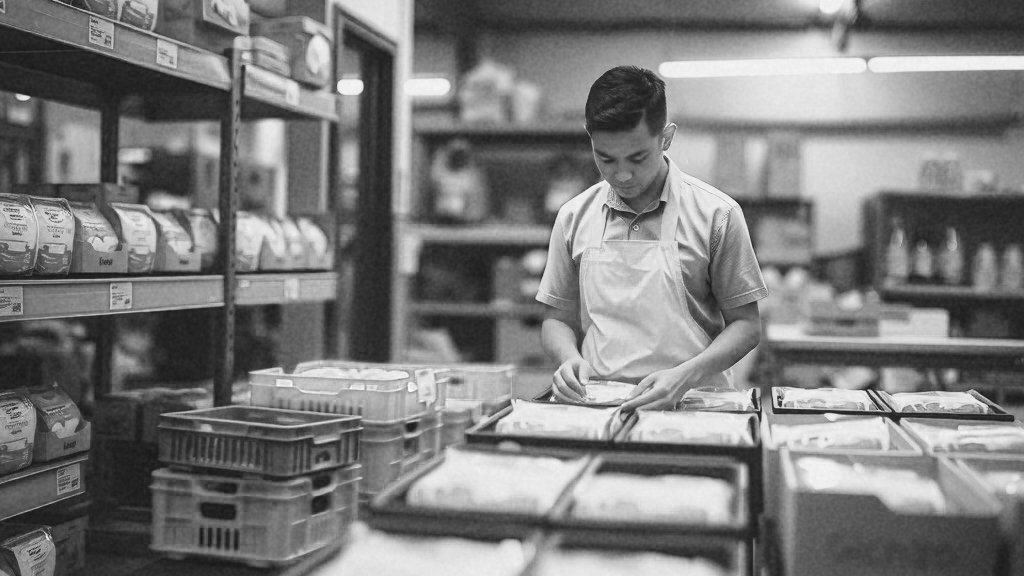Top Challenges and Winning Strategies for Food & Beverage CPG Brands in 2025

The food and beverage consumer packaged goods (CPG) sector is evolving rapidly as the industry adapts to shifting consumer preferences, multi-channel distribution models, and increasing operational complexity. For eCommerce, direct-to-consumer (DTC), and retail brands, navigating these changes means confronting several pain points that threaten profitability and efficiency.
This article explores the key challenges facing food and beverage CPG brands in 2025 and provides actionable strategies to overcome them. From data silos to inventory management issues and the ever-changing consumer landscape, the right approach can help businesses streamline operations, reduce risk, and focus on growth.
The Top Challenges for Food & Beverage CPG Brands
1. Data Silos: Disconnected Systems Undermine Efficiency
Data silos remain one of the most significant hurdles for food and beverage CPG brands, especially those with a presence in multiple sales channels. With inventory, sales, and marketing data living in separate systems, teams often struggle to make timely and informed decisions.
Why It Matters:
- Disconnected systems slow down reporting and prevent brands from seeing the full picture of their operations.
- Lack of real-time insights can lead to missed opportunities for optimizing sales, improving inventory, or responding to customer behavior.
Solution: Implement integrated software solutions like enterprise resource planning (ERP) systems to centralize data across eCommerce, retail, and DTC channels. When these tools are coupled with real-time dashboards, they provide decision-makers with actionable insights.
2. Inventory Management: Walking the Tightrope
For food and beverage brands, poor inventory management can lead to two costly problems: overstocking and stockouts. Both scenarios hurt profitability, but they are especially damaging for products with a short shelf life.
Why It Matters:
- Overstocking increases storage costs and waste, particularly for perishable goods.
- Stockouts not only lead to lost sales but can also damage brand reputation.
Solution: Leverage AI-powered forecasting tools to predict demand more accurately. These systems analyze historical data, seasonality, and even external factors like weather patterns or economic trends to optimize inventory levels. Aligning inventory with promotional campaigns ensures better preparedness for sales spikes.
3. Cost Visibility: Seeing the Whole Picture
Rising advertising costs, subscription models, and complex shipping expenses make it harder to track profitability. Without a clear understanding of customer acquisition costs (CAC) and lifetime value (LTV), brands risk making decisions that undercut long-term growth.
Why It Matters:
- Poor cost visibility can lead to unprofitable promotions or overly aggressive ad spend.
- Brands may overlook key customer segments due to a lack of clarity on LTV.
Solution: Implement granular tracking systems to assess CAC and LTV by channel. Pair this with dynamic pricing tools to ensure products are priced to maintain healthy margins across varying sales environments.
4. Rapidly Changing Consumer Behavior: A Moving Target
Consumer preferences in the food and beverage space are shifting faster than ever. Health-conscious eating, demand for transparency, and preferences for sustainability are reshaping how products are perceived and purchased.
Why It Matters:
- Delays in responding to trends like plant-based foods or low-sugar options can lead to lost market share.
- Traditional marketing strategies may fall flat as consumers demand personalized, values-driven communication.
Solution: Stay ahead by investing in market research and leveraging social listening tools to identify emerging trends. Build agility into production schedules to pivot quickly when introducing new product lines or flavors.
5. Operational Complexity: The Cost of Growth
Managing a multi-channel strategy comes with logistical challenges, especially for food and beverage brands balancing wholesale, retail, and DTC models. Each channel has unique needs, and brands often struggle to avoid cannibalizing revenue between them.
Why It Matters:
- Wholesale accounts often require different pricing, packaging, and inventory considerations than DTC orders.
- Balancing shipping logistics between retail stores and direct customers can strain resources.
Solution: Use order management systems (OMS) to streamline fulfillment and ensure seamless coordination across channels. Invest in warehouse automation to handle increased order volume without sacrificing accuracy or speed.
Winning Strategies to Streamline Operations and Forecasting
The following strategies can help food and beverage CPG brands reduce complexity and improve forecasting accuracy in 2025:
1. Adopt an Omnichannel Mindset
- Integrate data from all sales channels to gain a unified view of performance.
- Use predictive analytics to identify trends and make proactive decisions.
2. Simplify Metrics and Reporting
- Focus on KPIs like gross margin, churn rate, and inventory turnover.
- Avoid vanity metrics that don’t drive decision-making.
3. Invest in Cross-Training Teams
- Equip employees to handle challenges across departments, from supply chain to marketing.
- Develop a company culture that values collaboration and adaptability.
4. Embrace Sustainable Practices
- Introduce forecasting models that account for sustainability goals, such as reducing waste.
- Communicate these efforts to build trust with eco-conscious consumers.
5. Plan for Contingencies
- Develop multiple forecasting scenarios to prepare for market uncertainties.
- Keep a financial buffer to handle unexpected challenges like supply chain delays or ingredient shortages.
I am an Ad-Age, Emmy, Shorty, Telly, and Webby Award-Winning Social Media Strategist and Content Creator specializing in outdoor lifestyle, adventure, travel, and recreation brands. With over 20 years of experience, I’ve driven community engagement and brand loyalty by creating compelling content for major outdoor lifestyle, food & beverage brands and TV shows. My expertise in strategic storytelling has helped amplify voices in the outdoor space, fostering strong connections and vibrant online communities.
adage, emmy, telly & webby award-winning digital marketing consultant for purpose-driven food & beverage brands.





